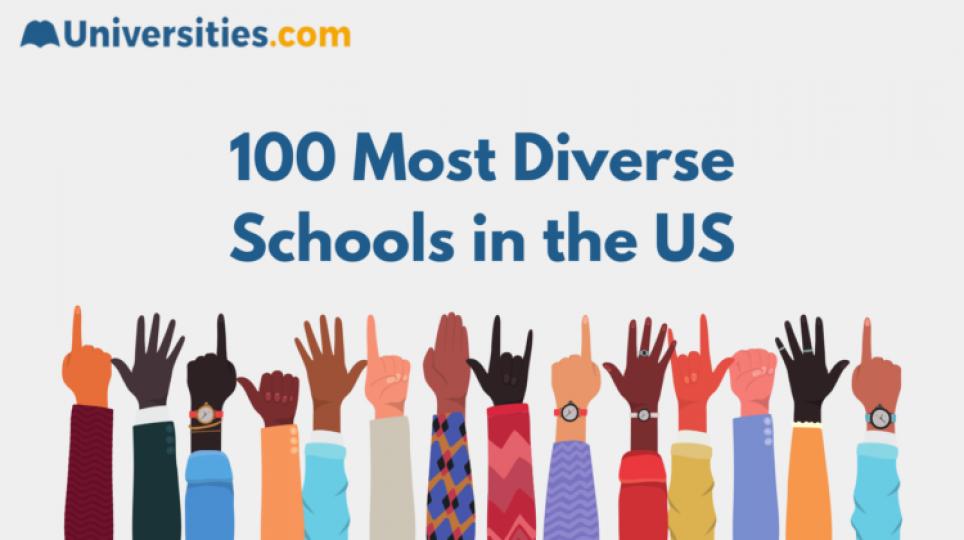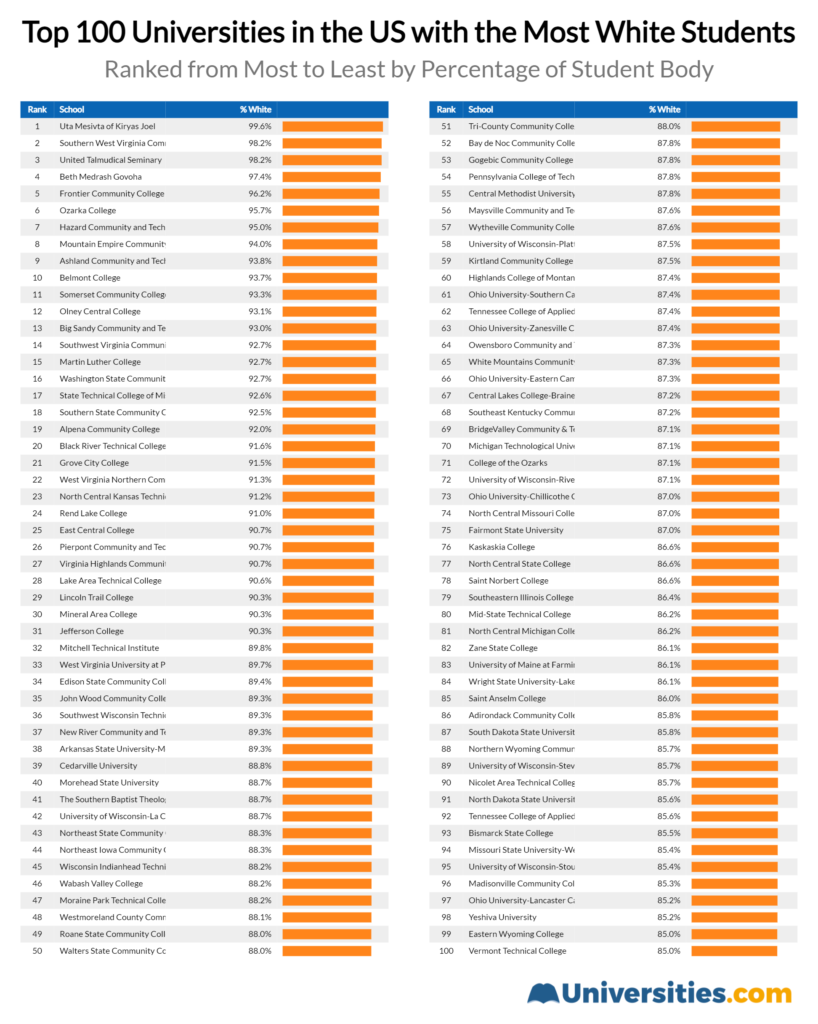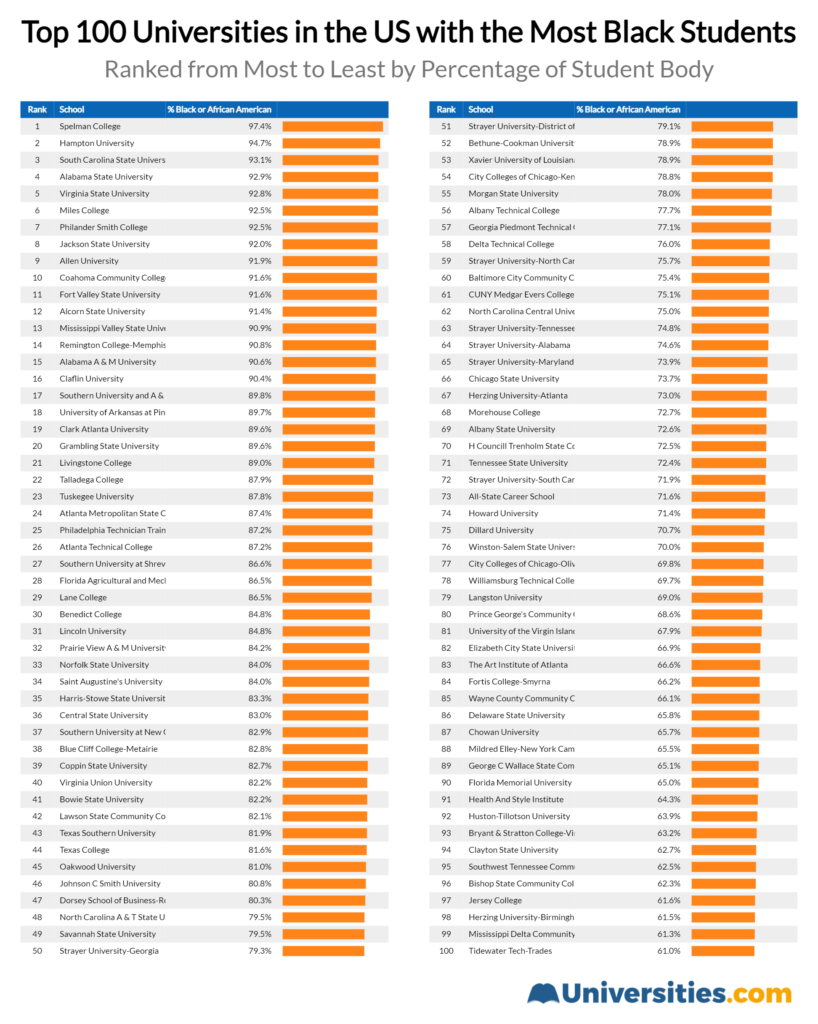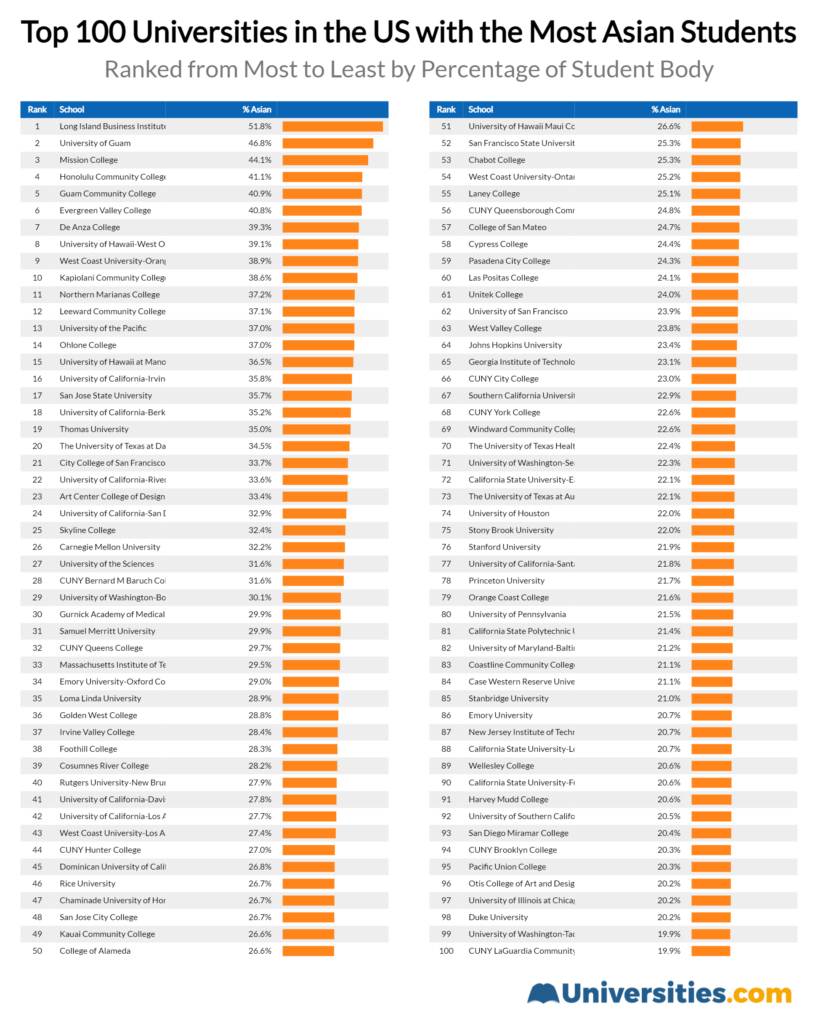
For many, college is a place to learn from your peers. Schools with diverse student bodies create a hotbed of different viewpoints that can provide an invaluable learning experience. In addition, many schools make it an aim to use their resources to elevate students that are coming from historically underrepresented or disadvantaged backgrounds.
As such, diversity is a metric that all colleges track, but which schools excel? In this report, we rank the top universities according to most and least diverse. Do some schools maintain a balanced student body while others are comprised of just one race?
In this analysis, we decided to analyze student body demographic data provided by the Department of Education to calculate the top colleges with the most and least diverse student bodies. We used this data for all accredited institutions with more than 1,000 enrolled students to avoid smaller sample sizes.
For this analysis, we assessed the level of diversity using the Herfindahl–Hirschman Index (HHI), a calculation that measures diversity such as the competitiveness of an industry or the biodiversity of an ecosystem.
The least diverse college in this index would have a score of 1 (the entire student body is one race). In our analysis that includes five groups (White, Black, Hispanic, Asian, Other) a college where each group was 20% of the population would score as .20 and rank as the most diverse.
Among accredited schools, we found that Hawaii Pacific University was the most diverse overall, followed by Highline College and New York Institute of Technology. Among these top-ranked universities, we also looked at which schools had the highest percentage of Black students (Spelman College), Hispanic Students (Columbia Central University-Caguas), Asian Students (Long Island Business Institute), and White Students (Uta Mesivta of Kiryas Joel).
***
Before diving into the results and analysis, it’s worth noting that there are many different ways of calculating diversity. This method looks at whether a school’s student population is evenly balanced among demographics versus dominated by one specific group. Other ways of calculating diversity will yield different results. Additionally, to make this analysis tractable, we only looked at the top 100 schools as ranked by Universities.com. Outside of this elite group, there are thousands of other schools which may rank better or worse than these schools when it comes to diversity.
We begin our analysis by looking at the top 100 schools, ranked from most to least diverse according to the HHI index.

Hawaii Pacific University scores an HHI of .148 ranking it as the most evenly divided demographic composition of any accredited school with over 1,000 students. Ranking second by this diversity measure is Highline College, followed by New York Institute of Technology, Seattle Central College, and Berkeley City College.
Schools that rank poorly on this diversity metric are typically dominated by a single demographic group. To highlight this point, let’s show the schools ranked from highest to lowest percentage of the student body that’s comprised of white students.

Uta Mesivta of Kiryas Joel, Southern West Virginia Community and Technical College, and United Talmudical Seminary all are over 98% white while the average among top 100 schools is around 51%. Schools that are mostly comprised of one demographic rank poorly on the HHI metric of diversity in this analysis. Schools like Hawaii Pacific University, Highline College, and New York Institute of Technology that rank most diverse according to HHI generally have a white population of about 22% of the student body.
Next, let’s examine which top schools have the highest percentage of black students at top-ranked schools:

Among these top-ranked universities, Spelman College, a women’s HBCU, has a student body that is composed of 97.4% black students. Hampton University ranks second in highest percentage of black students, followed by South Carolina State University, Alabama State University, and Virginia State University.
Next, let’s examine which colleges have the highest percentage of Hispanic students:

Columbia Central University-Caguas ranks #1 in terms of top schools with the highest percentage of Hispanic students. Schools in Puerto Rico, Florida, and Texas dominate this ranking. In fact, the majority of the top 25 schools with Hispanic students are in Puerto Rico.
To conclude, let’s look at which of the top colleges in the country have the highest percentage of Asian students:

The Long Island Business Institute has the highest percentage of Asian students at 51.77%. Many of the schools with the most Asian students are located in Guam, Hawaii, or California. The University of Guam, Mission College, Honolulu Community College, and Guam Community College round out the top 5.
If you’re looking for other schools, check out the Find Your Perfect “U” tool. You can search over 6,000 colleges and universities with 11 different filters to find the perfect school for you!
***
In this article, we have produced a ranking of colleges based on diversity. While diversity can be measured in many different ways, the metric we focused on was the representation of all the demographic groups published by the Department of Education. Universities with a balance of these groups ranked at the top and those that were heavily weighted to one group ranked at the bottom. Among the top 100 schools in the country, Hawaii Pacific University, Highline College, followed by New York Institute of Technology, rank as the most diverse.
